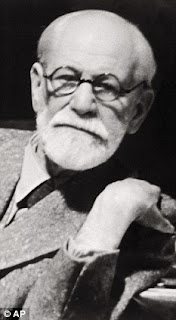The excerpt below* is from a recent address given by Dr. Margaret Chan, Director-General of the World Health Organization, at the Mental Health Gap Action Programme Forum.
If you read the mhGap Action Programme guide, mental health care is seen as the domain of the medical profession. Antipsychotic medications are also the first line of treatment for psychosis and for bipolar disorder. This runs contrary to what consumers want. People who actually suffer from these and other mental health conditions often say that the person who made the difference in their recovery was a caring relative, a friend, or more rarely, someone in a clinical setting who actually took the time to talk to them in a caring, empathetic way. This kind of intervention early on has greate potential to help the patient recover quicker.
Running contrary to the consumer’s position, the mhGap Action Programme places the emphasis firmly on interventions that can be undertaken by busy doctors, nurses, and medical assistants. Well, how is a busy doctor or nurse going to fulfill the needed empathetic role in a crisis situation? They’re not. The guide directs the patient to» Encourage involvement in self-help and family support.
What positive, encouraging attitude does the guide promote about the prospects for full recovery?
» Inform the person of the expected duration of treatment, potential side-effects of the intervention, any alternative treatment options, the importance of adherence to the treatment plan, and of the likely prognosis. (Rossa’s comment: This is purely “clinicalese,” very off-putting to patients and family. Will non-drug approaches be considered as alternative treatments? The term “likely prognosis” sounds bad, very bad to me. It’s a self-fulfilling prophecy for a dismal prognosis. Also, how is a medical assistant, a nurse or a doctor qualified or even capable of predicting the “likely” prognosis?)
» Address the person’s questions and concerns about treatment, and communicate realistic hope for better functioning and recovery.
(Rossa’s comment: Again, who are the staff to tell us what is realistic? What’s this talk about “functioning?” We demand and expect better than this.)
Robert Whitaker, author of Anatomy of an Epidemic: Magic Bullets, Psychiatric Drugs, and the Astonishing Rise of Mental Illness in America, should be invited to speak at the World Health Organization. He can talk about how the use of medications actually prolongues mental illness and, more importantly, in the context of the Mental Health Gap Action Programme, he can talk about the success of the Open Dialogue program in Finland. The Open Dialogue program is purposely staffed by non-medical professionals and resists drug treatment if at all possible.
*Excerpt:
With publication of the mhGAP Intervention guide, we now have a simple technical tool for detecting, diagnosing, and managing the most common, and burdensome, mental, neurological, and substance use disorders, in any resource setting.
The emphasis is firmly placed on interventions that can be undertaken by busy doctors, nurses, and medical assistants working, with limited resources, at first- and second-level facilities. Mental health problems, whether depression, epilepsy, dementia, or alcohol dependence, are real disorders. They cause death and disability. They cause suffering. They have symptoms. And they can be managed, in any resource setting.
This is the message we can now communicate with confidence.
No matter how weak the health system or how constrained the resources, something can always be done.
In a key achievement, the Intervention guide transforms a world of expertise and clinical experience, contributed by hundreds of experts, into less than 100 pages of clinical wisdom and succinct practical advice.
The guide, in effect, extends competence in diagnosis and management to the non-specialist, while respecting their busy schedules.
